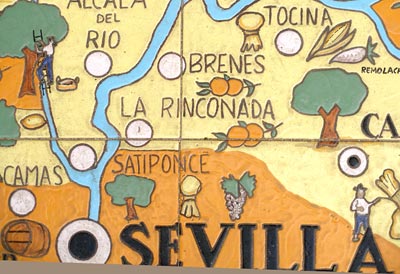Seville oranges are bitter oranges used for marmalades. They have a bumpy skin and are highly aromatic. The peel is useful in sauces and syrups. They originated in China and India and were known 3,000 years ago and were brought to Europe by Moorish traders who planted them in groves in the vicinity of Seville, hence the name. Hugh Fearnley-Whittingstall recounts the story of how marmalade came to be made from Seville oranges as a result of a nautical accident. In bad weather a ship was forced to take safe haven in Dundee. A local grocer, James Keiller (whose name is now synonymous with marmalade) bought the cargo at a cheap rate. His wife Janet, with a ready suppy of sugar at her husband's shop, made marmalade and, by 1797, had established the first marmalade factory. One of the things that is remarkable about Seville oranges is that they are one of the few remaining foods which is truly seasonal. The advent each year of the oranges in the depths of grey January/February in the UK, lift the spirits and everyone starts stirring and comparing their results.
